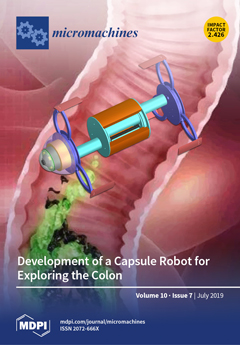In this paper, we report the effects of a side-polished fiber (SPF) coated with titanium (Ti) films in different thicknesses, namely 5 nm, 13 nm, and 36 nm, protected by a thin layer of transition metal dichalcogenides (TMDCs) such as molybdenum disulfide (MoS
[...] Read more.
In this paper, we report the effects of a side-polished fiber (SPF) coated with titanium (Ti) films in different thicknesses, namely 5 nm, 13 nm, and 36 nm, protected by a thin layer of transition metal dichalcogenides (TMDCs) such as molybdenum disulfide (MoS
2) and tungsten disulfide (WS
2), which provide ultra-sensitive sensor-based surface plasmon resonance (SPR) covering from the visible to mid-infrared region. The SPF deposited with Ti exhibits strong evanescent field interaction with the MoS
2 and WS
2, and good optical absorption, hence resulting in high-sensitivity performance. Incremental increases in the thickness of the Ti layer contribute to the enhancement of the intensity of transmission with redshift and broad spectra. The findings show that the optimum thickness of Ti with 36 nm combined with MoS
2 causes weak redshifts of the longitudinal localized surface plasmon resonance (LSPR) mode, while the same thickness of Ti with WS
2 causes large blueshifts. The redshifts are possibly due to a reduced plasmon-coupling effect with the excitonic region of MoS
2. The observed blueshifts of the LSPR peak position are possibly due to surface modification between WS
2 and Ti. Changing the relative humidity from 58% to 88% only elicited a response in Ti/MoS
2. Thus, MoS
2 shows more sensitivity on 36-nm thickness of Ti compared with WS
2. Therefore, the proposed fiber-optic sensor with integration of 2D materials is capable of measuring humidity in any environment.
Full article






